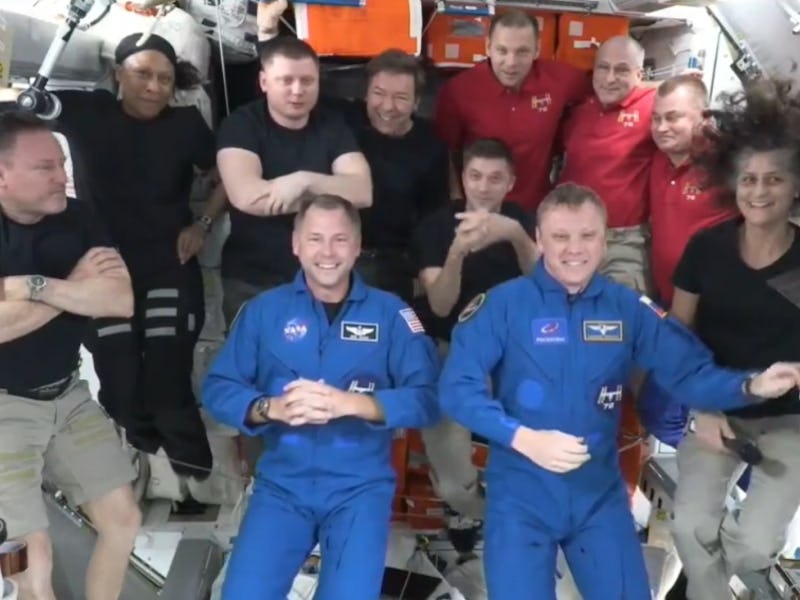The Stranded Starliner Crew Finally Has a Ride Home, But They Still Can't Leave
Meanwhile, Williams has been promoted from stranded test pilot to ISS commander.

The stranded crew of Boeing’s Starliner test flight are one step closer to coming home. Meanwhile, stranded Starliner pilot Suni Williams has taken command of the station.
On Sunday, astronaut Nick Hague and Russian cosmonaut Aleksandr Gorbunov arrived at the International Space Station with the Crew-9 capsule that will carry Butch Wilmore and Suni Williams back to Earth. The stranded Starliner crew are still a long way from coming home, but the arrival of their ride is a step toward clearing the orbital traffic jam that started with Starliner.
There are 11 astronauts and cosmonauts aboard ISS for the next few days — just two people short of the previous record.
Suni Williams Takes Charge
Their ride home has arrived, but the Starliner crew is still stuck aboard the ISS until February 2025, when Crew-9’s mission officially ends and Hague and Gorbunov will also return home. NASA isn’t cutting the Crew-9 mission short just to get Williams and Wilmore home sooner — even if that means that what was supposed to be an 8-day mission for the Starliner crew will have stretched to 8 months. In the meantime, Williams and Wilmore will watch four of the ISS crewmates leave for Earth on October 7.
Their departure will return the crowded ISS to its usual population of 7, with Starliner pilot Suni Williams in command. Williams took command of the ISS during the crew handover on Sunday, and she’ll hold the position until she leaves the station in February.
Williams is one of only four women to command the ISS during its 24-year history, and she’s the second — after Peggy Whitson — to do it twice. Her first stint was in late 2012.
The ISS is a busy place lately, as this NASA diagram of docked spacecraft shows.
Getting Back to Normal on the ISS
Crew-8 astronauts Matthew Dominick, Michael Barratt, and Jeanette Epps, along with Russian cosmonaut Alexander Grebenkin, were orginally scheduled to head home in early September, six months after arriving at the ISS in March. But after NASA and Boeing decided in August to bring Starliner home without its crew (just in case the troubled ship exploded or ran out of fuel on the way), Crew-8 had to stay at ISS so the now-shipless Starliner crew could cram into their Crew Dragon capsule in an emergency.
Safety procedures require that every astronaut aboard the ISS have a seat in a “lifeboat” in case they have to evacuate the station in an emergency (something like a debris strike or a catastrophic power failure). The astronauts squeezed a couple of temporary seats into the Crew-8 capsule for Williams and Wilmore.
Now that Hague and Gorbunov have arrived, with two empty seats on the Crew-9 capsule saved for Williams and Wilmore, the Crew-8 astronauts can toss out their extra seats and go home, a month later than planned.
What Happens to Starliner Now?
Meanwhile, back on Earth, NASA and Boeing engineers are still inspecting Starliner, which landed in New Mexico on September 7. They’re also poring over the spacecraft’s flight data, hoping to learn what caused the thruster failures and helium leaks that left Williams and Wilmore stranded in space.
Starliner was originally meant to allow Boeing to carry crews back and forth to the ISS for NASA, making them a rival to SpaceX, so it’s a bitter irony for Boeing that its flight test crew will be coming home in a SpaceX Crew Dragon capsule.